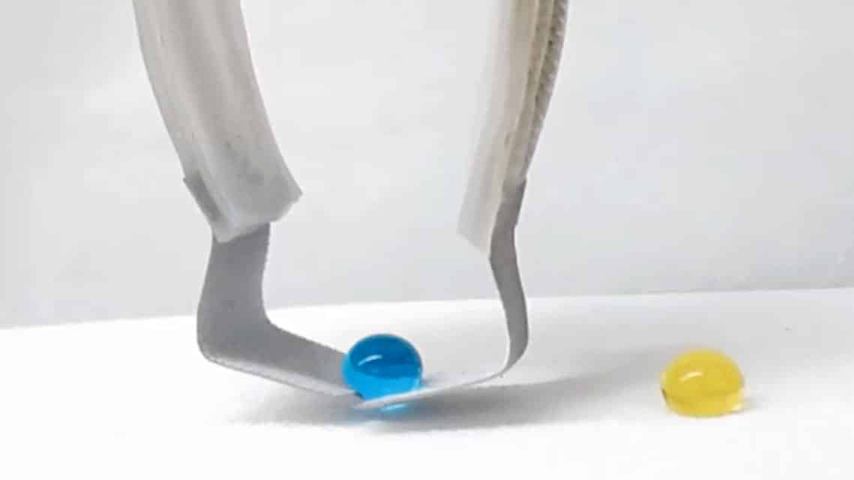Robotic Gripper Helps Clean Up Hazardous Liquid Spills
Robotic Gripper Helps Clean Up Hazardous Liquid Spills


Mechanical engineers have developed a soft, robotic gripper gentle enough to handle individual droplets, facilitating remote cleaning of biofluid spills.
In many liquid spills, human cleanup can be dangerous due to toxicity, risk of contagion, or other hazards in the surroundings. This remote, automated robot can minimize human exposure to the spill, said mechanical engineers at Colorado State University. The CSU engineers created the first soft gripper sensitive enough to pick up individual liquid droplets.
Workers vulnerable
Healthcare workers and clinical laboratory employees are particularly vulnerable to laboratory-acquired infections because they handle the specimens. As a result, they’re on the front lines for laboratory-acquired infections.
And the infections are of public health concern, as an infected worker may present a risk of transmission to his colleagues, relatives, family members, or others.
Precision cleanup
In the event of a spill, the robot grippers do precise, clean-up work without losing any liquid, said Jiefeng Sun, a postdoctoral fellow in the university’s Adaptive Robotics Laboratory who helped engineers develop the tool.
Become a Member: How to Join ASME
Details of the team’s work can be found in the article, “On-demand, remote and lossless manipulation of biofluid droplets,” in the Royal Society of Chemical Journal Materials Horizons. While the lightweight, inexpensive grippers are capable of delicate work, they’re 100 times stronger than human muscle of the same weight.
Soft robots can be lightweight and provide a gentle touch that’s difficult to achieve with conventional robots. They are far lighter and can be produced at a fraction of the cost of traditional robotics. “A single gripper as large as my finger is one or two grams, including the artificial muscle embedded. And it’s inexpensive—just one or two dollars,” Sun added.
Similar Reading: New 3D-printed Grippers for Short-term Manufacturing Runs
“These droplet manipulators are inexpensive enough to be disposable, but capable enough to do precise, lossless liquid cleanup work no other robot has ever done,” Sun said.
Additional coating
The soft robotic grippers are treated with a novel superomniphobic coating that makes the droplet manipulator possible. The coating enables the robot to interact with droplets without breaking their surface tensions, so that it can grasp, transport, and release individual droplets as if they were flexible solids, Sun said.
The coating, developed by then-CSU associate professor Arun Kota, resists wetting by nearly all types of liquids, even when the liquid and the surface it covers are tilting or moving, Sun added. Kota is now an associate professor of mechanical and aerospace engineering at North Carolina State University.
“There was a nice synergy between these two kinds of research," said Jianguo Zhao, director of the Adaptive Robotics Laboratory. “Dr. Kota was working on coating, and we were working on this soft robot, to manipulate droplets, so we figured out this might be a good combination.”
The researchers said their biofluid manipulators can not only reduce manual operations and minimize exposure to infectious agents, but also pave the way for developing inexpensive, simple, and portable robotic systems.
“It’s a very unusual example of a high-tech product that is not terribly expensive,” Zhao said.
Jean Thilmany is a freelance writer living in St. Paul.




